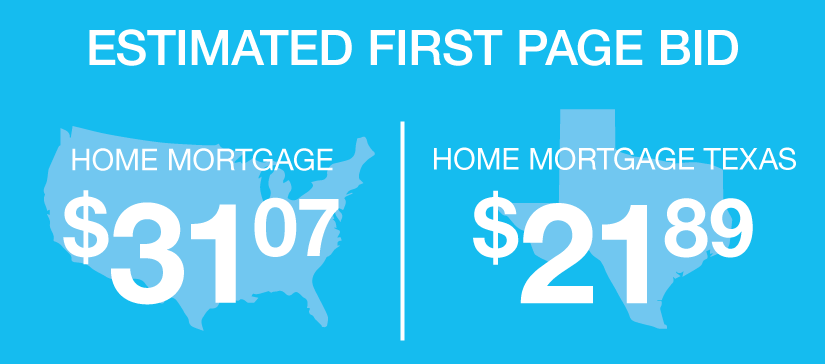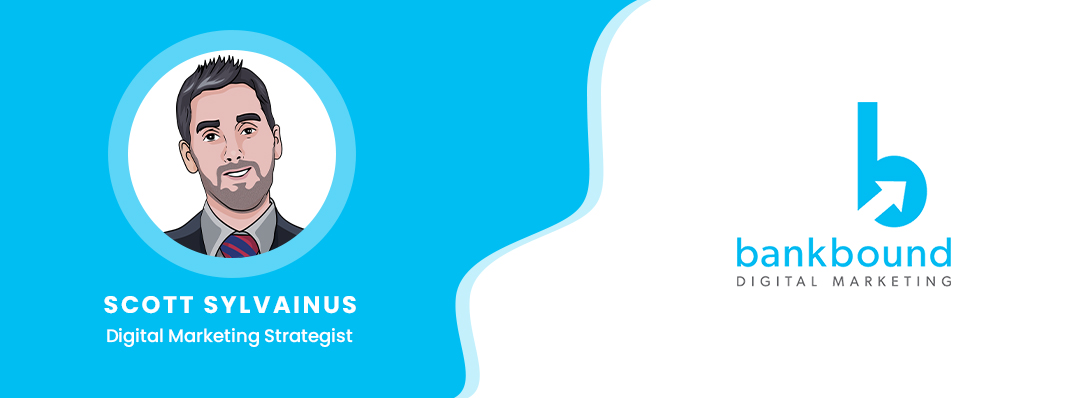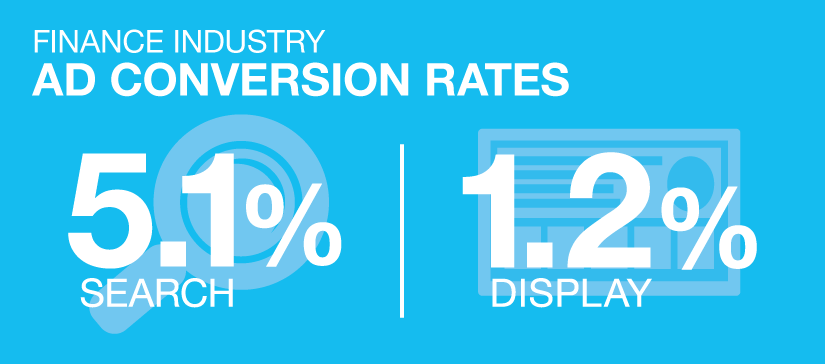Budgeting
The results from your digital marketing efforts are not necessarily proportional to your budget. A small budget does not mean mediocre results just like a large budget does not guarantee a fantastic outcome. Careful planning, strategic thinking, and an honest evaluation of marketing goals and priorities can help any budget exceed expectations. At BankBound we use the strategies listed below to help our clients get the most out of their digital marketing resources. If your past campaigns were not as successful as you had hoped, it might be valuable to review this list for things that could help your next effort show better results.
1) Start Simple.
Conversions are an effective metric to measure the success of your efforts. A conversion means a user has completed a task you have deemed valuable. While impressions or clicks are helpful in determining if an ad is finding the right audience, conversions are ultimately what matter the most. While display ads can deliver a substantial number of impressions per dollar, the conversion rates are typically significantly lower when compared to search campaigns. Search campaigns have higher conversion rates because they target users who are showing intent. The user inputs exactly what they are looking for into the search query, meaning they are likely closer to converting or ready to buy when they see your ad.
2) Use Display Ads for Remarketing.
Remarketing provides additional touchpoints to prospects who have already shown strong intent. A prospect may have clicked on one of your ads or visited a specific page on your website. A follow-up via a remarketing display ad may be the nudge they need to pick up the phone, open an account, or schedule an appointment and continue on their customer journey. Start your remarketing efforts with an existing search campaign that has proven successful with consistent conversions over a period of time. Remarketing should enhance those results. Because of the extremely targeted nature of remarketing ads, they convert at a significantly higher rate than standard display ads and result in a much more budget friendly cost per conversion.
3) The Key(word) to Success.
The keyword list is one of the principal factors in the success of a search ad campaign. Thoroughly researching an appropriate keywords list can be a time intensive exercise, but not one where a shortcut should be taken. Your keywords should match the terms your potential customers would use to find your products or services. A poor keyword list can lead to you having higher prices and lower ad positions. Do not think just because you picked a great keyword list that your work is done. As your ads are displayed to users, the search terms they used will become available to you. It is important to review these results for possible words or phrases to add to your keyword list. Just as important are negative keywords. A negative keyword list prevents your ad from triggering when the search term is not appropriate or otherwise unwanted, and avoids the cost of a low quality click. A well-maintained keyword list is vital to your ads appearing to users in relevant and opportunistic situations.
4) Laser Focused.
Having too many campaigns running at once is a significant reason digital marketing initiatives fail. Having to many simultaneous campaigns to fund will dilute your budget to the point where you’re not able to bid competitively on effective keywords. This will result in your ads receiving fewer impressions causing fewer clicks and conversions. Focus your campaigns on the financial products most important to your organization and allocate enough of a budget to be competitive. This will be a moving target at first and each product will need a different amount to be successful. Keep your focus narrow until you have established your campaigns results. When you are ready to expand, be sure to increase your budget accordingly and avoid sacrificing an already productive campaign.
5) Long Tail Keywords are Your Best Friend.
A limited budget will not allow your campaign to be competitive on the most popular keywords. What you need is a long tail keyword. Long-tail keywords are phrases that are more specific and better indicate a user intent. Long-tail keywords will have less search volume but will also be significantly more cost effective. Long tail keywords can be phrases, not just one or two words. You can also consider localizing the term with your state, region, or city name further narrowing users’ intent. Another option is a Keyword Gap Analysis. At BankBound we have the ability to track the keywords outside of your competition’s focus. This gives your organization a chance to target these missed opportunities and drive results while saving money.
6) Put Your Ads to Bed
Pausing your ads overnight, when most people are sleeping, can lower your cost per click and, in turn, your cost per conversion. Utilizing your ads during the most active user hours increases exposure and your chances of conversion. At BankBound we analyze each type of product to find the peak hours of activity to further refine the ad schedule. Someone who is looking for a checking account or an auto loan is likely to have a different behavior pattern than a business owner looking for an equipment loan.
7) Take a Few Days Off.
After running ads for a few weeks, you should have enough data to establish which days of the week are the most and (just as important) least popular for users to interact with your ads. In some cases, financial brands will see significantly less traffic on weekends as people are focused on other things. It may be worthwhile for you to pause or appreciably decrease your bids on Saturdays and Sundays, reserving more of your budget for the heavier weekday traffic. Keep in mind user patterns can change drastically throughout the year. During warmer weather months customers might vacation or spend time outdoors on weekends. During colder months they may be spending more time indoors. Make sure to revisit your results regularly and adjust when necessary.
8) Tis’ the Season.
You may find the popularity of some financial products spike at specific times of the year. For example, March through April is likely to see a 20-30% jump in used car sales. Considering that two-thirds of tax refunds are distributed by the end of March, it is safe to say that tax season does play a key factor in that increase. Take into account this type of seasonality, and boost your spending on financial instruments just before they hit their peak. Strategically allocating extra budget for those popular products will get you the most bang for your buck. It is unlikely for a financial institution to have the digital marketing budget or resources to fund an ad campaign for every product at all times. Always keep a constant marketplace presence to remind your customers you are there to assist, while reinforcing brand recognition for your organization.
9) DIY over AI.
While the automated AI bidding process Google has developed can be a time saver, it does tend to set the bids higher than they need to be. Using a manual bidding strategy lets you decide exactly how much you want to spend on each keyword. If your Quality Score (we will get to that in a minute) is high, you might be able to bid below the recommended price and still get impressive results! We recommend you set aside about 60-90 minutes each week to review and adjust your bids. If you make bid adjustments too frequently, you may not be giving your modifications enough time to influence results.
10) Ask for an Extension.
Ad extensions are little bits of information that expand your ads. They can be a clickable phone number, a link to driving directions or a product’s price. Google currently has around fourteen different types of ad extensions and is always adding or testing new ones. Adding extensions make your ads more engaging while giving users useful information. Typically, this results in improved click-through rate and increased visibility in the Search Engine Results Page.
11) He Shoots…and Scores!
Your ad’s Quality Score is how Google determines if your ad is meeting users’ needs. Ads receive a value of 1 – 10. Generally, the higher your Quality Score the lower your cost per conversion. Your ads Quality Score is largely based on three factors. Each element is graded as “Above Average,” “Average,” or “Below Average.” The exact weight in the grading process each one carries is unknown.
-
- Ad Relevance: The closer a users’ search term matches the copy in your ad, the better. Look through your ad groups search terms list and add irrelevant keywords to the “Negative Keywords” list. Think strategically about the audience you want to target, and those you do not.
- Expected Click Through Rate: This refers to how likely someone is to click your ad. If Google has determined that your ad copy and ad experience may lead to a high click through rate, Google may be more likely to show preference to your ad than others competing for the same audience.
- Landing Page Experience: It is important that the landing page to which an ad directs a user to is relevant to the search topic. It should include the same or semantically related keywords.
12) You are not a mind reader.
This is where Responsive Text Ads come in. You can write up to fifteen unique headlines and four different descriptions in the same ad. For the best results include the keywords for which you are bidding for. Google will test numerous permutations of your ads and, in time, deliver the versions they feel are most likely to result in a conversion. This algorithmic and automated approach saves you an enormous amount of time by not having to create, maintain, and manage each of those unique ad combinations manually.
How Much is Enough?
Astronomical campaign budgets do not guarantee success, just like modest budgets do not guarantee failure. Having a limited digital marketing budget does not have to equate to mediocre results. If you work to implement the suggestions from above into your campaigns, you may be surprised how low your cost per click and cost per conversion can go.
Ready to get started?
The great thing about digital marketing is how easy it is to try out a new idea or strategy. Experimentation, evaluation and adjusting will lead to improved results and generate income for expansion along the way. We are here to help your organization improve the results from your digital advertising campaign. Our experts can lead you through this process, strategizing to develop measurable and sustained success, regardless of budget or resource constraints, making digital marketing your most successful marketing channel. Schedule a consultation with a strategist today.




